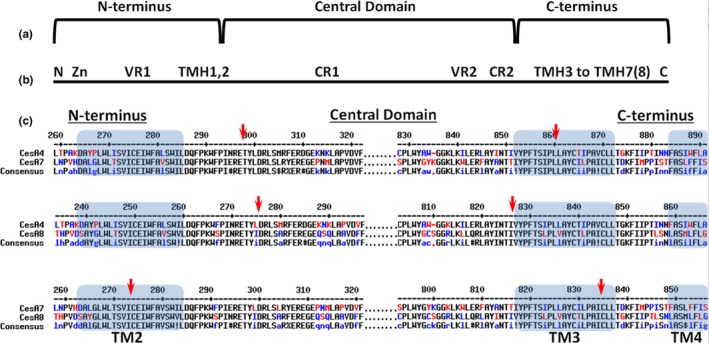Figure 1.

Chimeric CESA construction. (a) Three CESA segments assembled to make chimeric constructs: N‐terminus; central domain containing the catalytic core and the peripheral P‐CR and CSR domains; and the C‐terminus. (b) Nine CESA segments swapped by Kumar and coworkers (Kumar et al., 2017) to make chimeric constructs: N = short N‐terminus prior to the Zn‐binding domain; Zn = Zinc‐binding domain; VR1 = variable region 1; TMH1,2; CR1 = conserved region 1 with the P‐CR in the middle; VR2 = variable region 2 composed mostly of the CSR; CR2 = conserved region 2; TMH3‐7(8), and C = remaining protein after the last TM helix. (c) Trimmed MULTALIN alignments showing the junction (arrow) between segments assembled in chimeric constructs. These junctions were all in the vicinity of TM2 or TM3 (blue boxes), but were selected for each domain swap pair to maximize amino acid and nucleotide sequence identity adjacent to the junction
